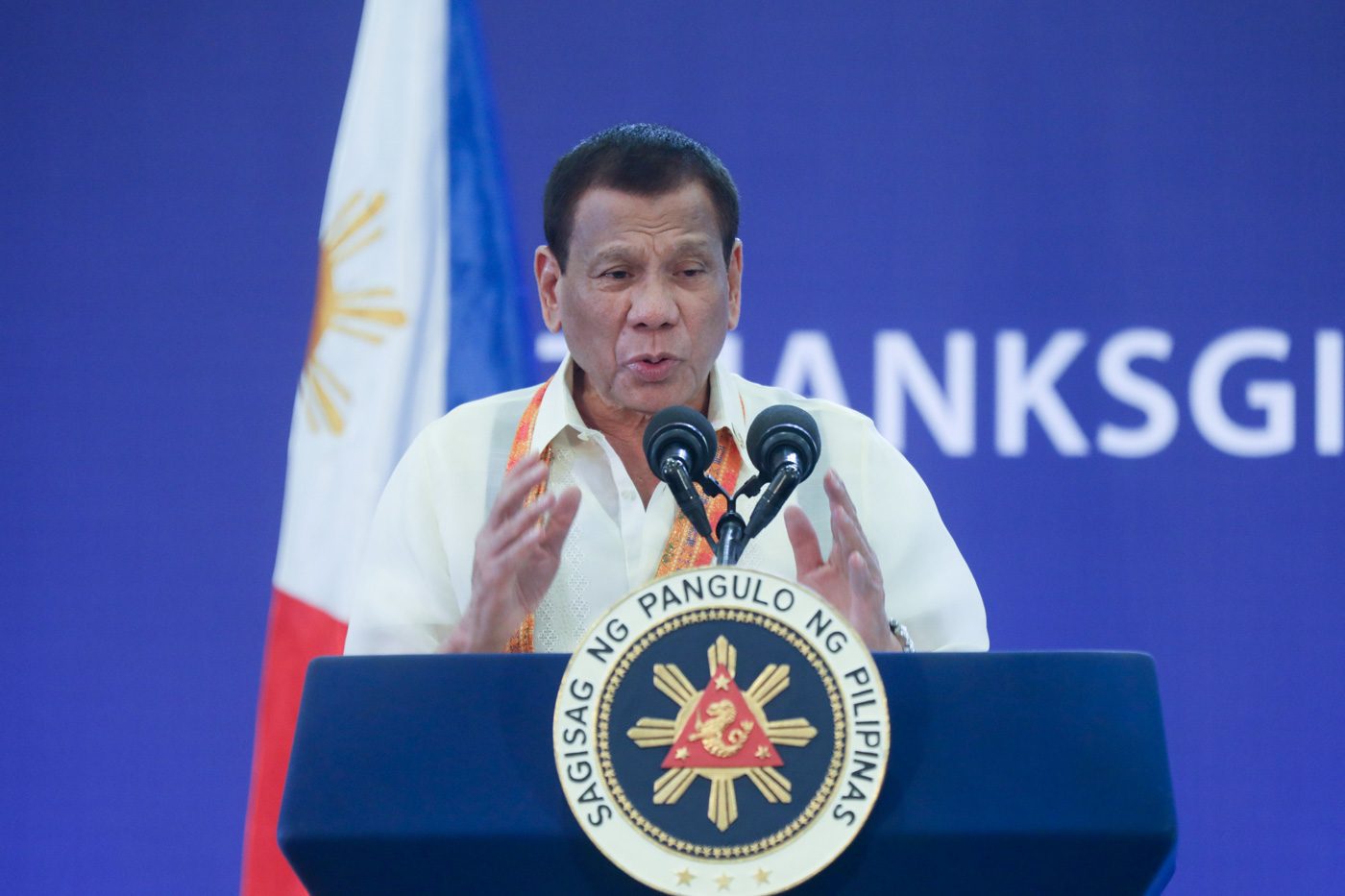SUMMARY
This is AI generated summarization, which may have errors. For context, always refer to the full article.

MANILA, Philippines (3rd UPDATE) – The Philippines has sent its notice of termination of the Visiting Forces Agreement (VFA) to the United States, Malacañang announced on Tuesday, February 11.
Presidential Spokesperson Salvador Panelo said in a news briefing on Tuesday that Foreign Secretary Teodoro Locsin Jr signed the Philippines’ notice of termination that day and sent it to the US government.
“The Executive Secretary sent the message to Secretary Teddyboy Locsin and the latter signed the notice of termination as sent to the US government today,” Panelo said.
“As the President said, it’s about time we rely on our own resources,” he added.
What happens next? With the Philippines’ formal notice signed, termination will take place 180 days or 6 months after the US received written notification. In the meantime, Article IX of the agreement, states the VFA remains in force until the end of the time period.
Specifically, the provision on Duration and Termination reads: “This agreement shall remain in force until the expiration of 180 days from the date on which either party gives the other party notice in writing that it desires to terminate the agreement.”
Locsin on Tuesday said the Deputy Chief of Mission of the US embassy had already received the Philippines’ notice of termination of the VFA. The DFA chief however, suggested there could be room for a vigorous review to take place.
“You’re the only one who got that,” Locsin tweeted in response to a reporter commenting the termination would trigger “furious negotiations.”
@DFAPHL The Deputy Chief of Mission of the Embassy of the United States has received the notice of termination of the Visiting Forces Agreement. As a diplomatic courtesy there will be no further factual announcements following this self-explanatory development. https://t.co/qQhywEpcea
— Teddy Locsin Jr. (@teddyboylocsin) February 11, 2020
Why this matters. Locsin made the move despite his and Defense Secretary Delfin Lorenzana’s earlier push for a review of the VFA rather than its outright termination. Both Locsin and Lorenzana earlier said they were not consulted when Duterte threatened to scrap the decades-old military pact. (READ: With threats to scrap VFA, Duterte gambles Philippines’ security)
Locsin earlier warned of the far-reaching consequences if the Philippines were to abrogate the VFA. He earlier told a Senate panel that while it was President Rodrigo Duterte’s prerogative, “the continuance of the agreement is deemed to be more beneficial to the Philippines compared to any benefits were it to be terminated.”
(FULL TEXT: Locsin on impact assessment of VFA termination)
On Monday night, February 10, Duterte launched a fresh round of verbal tirades against the US saying while top officials, including President Donald Trump, were trying to salvage the VFA, he was bent on having it terminated. (EXPLAINER: Visiting Forces Agreement)
Duterte first broached his plan to terminate the VFA on January 23, after the US canceled the visa of Senator Ronald dela Rosa. Dela Rosa is Duterte’s first Philippine National Police chief known as the architect behind the government’s bloody anti-drug campaign.
The President later said he was serious about his decision, adding his choice to do so was anchored on US lawmakers’ moves to impose travel and financial restrictions on Philippine officials linked to the detention of opposition Senator Leila de Lima and alleged extrajudicial killings (EJKs) under the Duterte administration. (READ: Why the Global Magnitsky Act matters to the Philippines)
Aside from the US, the Philippines has a similar VFA with Australia that allows their troops to visit the country for joint activities. The Senate ratified the Status of Visiting Forces Agreement with Australia in September 2012.
During the Aquino administration, the Philippines and Japan in June 2015 also began discussions on a similar treaty that was expected to allow Japanese military access to the country’s military bases. – Rappler.com
Add a comment
How does this make you feel?
There are no comments yet. Add your comment to start the conversation.